Emily Shartrand • University of California, Irvine
Recommended citation: Emily Shartrand, “’I Have The High Ground!’: The Snail and Knight Motif in the Margins of Manuscripts,” Different Visions: New Perspectives on Medieval Art 9 (2023). https://doi.org/10.61302/UVKB8713.
The margins of medieval manuscripts are the locus for some of the most unstable ground in medieval art historical scholarship. Despite continued gains in the field from scholars[1] who have built upon the early work of Lilian Randall, Lucy Freeman Sandler, and Michael Camille, these margins are still understudied and under-catalogued in growing digital databases. Secular, comic, and monde renversé (or world-turned-upside-down) motifs are sometimes acknowledged for their delightful character and multivalent natures, yet their purpose and meanings in the context of specific books are rarely the subject of entire studies. One such motif is known as the “snail and the knight.” The term refers to marginal decoration that consists of a knight, or man, and a snail, facing off against each other. The snail is usually much larger than life-sized in comparison to the knight, and in monde renversé fashion seems to be the eventual victor of the conflict. The knight is almost always rendered as fearful, comically over-armed, or fleeing the battle entirely. Unlike many other similarly comic motifs, the snail and the knight has received some scholarly attention and significant public fascination. The motif is the subject of a 1962 Speculum essay by Lilian Randall entitled, “The Snail in Gothic Marginal Warfare.”[2] It is also the topic of a number of general interest articles questioning why snails and knights chose to fight one another in the margins of medieval manuscripts.[3]
The goal of this paper is threefold. First, it seeks to build upon Lilian Randall’s 1962 essay. In particular, it will contend that the snail and the knight motif is one that has a special connection to the border decoration of manuscripts. This motif frequently employs the manuscript borders as real and stable ground-lines as opposed to edges to float above or below. Secondly, this article will investigate why snails in the margins are often accompanied by burrowing animals such as the hare, a connection that was noted by Randall but never fully addressed. In addition, it will touch upon the issue of gender as it connects to monde renversé motifs, of which snails and hares are just two examples. Finally, this article will draw on a select few specific folios in order to forge deeper connections between snails, earthen borders, and the monde renversé in the margins of manuscripts. It will ultimately conclude that the presence of a ground-line can provide an new interpretative layer that does not negate previous understandings of the snail and knight, such as those proposed by Randall, but instead adds to them. It is crucial, when working with multivalent motifs, to not make any all-encompassing statements as to their significance.[4] Instead, new interpretations are added to the well from which future scholars can draw when relevant to their specific case studies.
Surveying the Snail
In addition to identifying seventy iterations of the snail and knight motif over twenty-nine manuscripts, Randall provides some key background information that bears repeating. She notes that the majority of these manuscripts were produced between the years of 1290 and 1310 in Northern French, Franco-Flemish, and English contexts. Furthermore, although there is no one set type of manuscript that frequently boasts the snail and knight motif in terms of content, one common feature is “a distinct preference for travesty, genre, and literary themes rather than for fantastic imagery or grotesquerie” in the margins.[5] Finally, Randall comments, “Although apparently unrelated to immediately adjoining illustrations or textual passages, the motif often appears in marginal programs dominated by monde renversé themes involving men and hares.”[6] Thanks to the extensive work done by Maeve Doyle and Alex Brey as part of their project Modeling Networks of Artistic Contact in French Gothic Manuscripts, 1260-1320 for the Getty Advanced Workshop on Network Analysis and Digital Art History there will soon exist an updated digital resource to aid in the study of marginal motifs from the late thirteenth to early fourteenth centuries. Their work draws on Alison Stones’ Gothic Manuscripts: 1260-1320 and Randall’s Images in the Margins of Gothic Manuscripts as its two main sources of data.
In data converted and enriched from Randall’s Images in the Margins, Doyle and Brey compiled a list of fifty-one manuscripts in which at least one snail appears in the margins.[7] This list identifies thirty-one instances of the snail and knight motif in which the human combatant is clearly identifiable as a knight. Like Randall’s Images in the Margins, Doyle and Brey’s list includes interconnected themes or frequently recurring nearby motifs (Table 1). What Randall, and consequently Doyle and Brey, do not identify is the position of the snail in any of these battles. Randall’s data instead focuses on the positions and actions of the human figures. For example, the list includes five instances where the human/knight figure is kneeling before the snail, which shows that the human figure lowers themself either below or at the same level as the snail, but it does not contain information on the examples where snails are raised up on some form of ground.
Table 1 – Data from Randall, Doyle and Brey Study
| Manuscripts with snails in the margins | 51 |
| Snails Engaged in combat | 96 |
| Snails battling knights | 31 |
| Snails battling human/hybrid figures | 50 |
| Snails battling an animal (ape, dog, or hare) | 15 |
| Snails and hares occurring in proximity | 19 |
| Hares in snail shells in battle with hybrid figures | 4 |
Of the ninety-six total examples of snail combat included in Doyle and Brey’s list I was able to access forty-one through digitized versions of the corresponding manuscripts. Using the Index of Medieval Art, I was additionally able to identify six examples of snails engaged in combat not listed by Doyle and Brey.[8] From this sample I noted twenty-one examples of the snail and knight (or snail and other combatant) motif in which the snail was raised up above or at eye level of its opponent, resting on a border tendril or actual earthen ground, and another seven in which the snail was only slightly raised, but not at or above eye level of his opponent (Table 2). There are likely to be several more instances of the raised ground-lines than I was able to confirm remotely, although I cannot guarantee that the trend would remain stable. Regardless, given that over half of the examples of the snail and knight motif I was able to access involved some sort of raised ground-line, and well over a third occur in proximity to a hare, both seem suggestive enough to warrant further discussion.
Table 2 – Data Collected by Author
| Total number of snails engaged in combat in the margins of manuscripts | 102 |
| Number of examples of snails engaged in combat accessed for this study | 47 |
| Percentage of total manuscripts accessed | 46% |
| Accessed examples of snail combats where snail is raised above the eye level of their opponent through earthen ground or border tendril | 21 |
| Accessed examples of snail combatants where snail is on raised border or ground, but is still below eye level of opponent | 7 |
| Total percentage or accessed examples of snail combat where groundline is present | 60% |
The Trouble with Meaning
In the conclusion to “The Snail in Gothic Marginal Warfare,” Randall argues that the snail and knight motif has a significance beyond that of a satirical depiction of cowardice. According to Randall, the motif is a reference to biased sentiments Northern Europeans had against the Lombard people as foreigners, usurers, and pawnbrokers. These negative sentiments developed due to the Lombards’ economic expansion into commercial centers in Northern Europe and England.[9] Randall provides several interesting literary references that bring together Lombard cowardice and the concept of testing one’s fortitude by engaging in a fight against a snail, most notably the pseudo-Ovidian De Lombardo et lumaca from the late twelfth century.[10] Nonetheless, I do not believe that she convincingly demonstrates that the snail and knight motif is a reference to the Lombards in all or even most manuscript contexts in which it is found. This is not to say that Randall’s conclusion is never correct. Instead, I suggest that it is a single layer of meaning which scholars can apply to the motif in applicable contexts.
Another, less specific, suggestion of Randall’s is that the snail’s shell mimics the metal armor of the knight, making it a worthwhile opponent.[11] Carl Pyrdum in his 2009 blog post on the snail and the knight motif for Got Medieval insists that he has, “never been entirely convinced,” by Randall’s suggestion that, “perhaps the joke is that snails, what with the shells they carry on their backs and can hide away in, are some sort of parody of a highly-armored chivalric foe.”[12] Conversely, Marian Bleeke in “Modern Knights, Medieval Snails, and Naughty Nuns,” notes several examples of the snail and knight motif in which she found the “shell as armor” comparison to be very convincing.[13] In three specific instances, one from the Smithfield Decretals (BL, Royal Ms. 10 E IV), ca. 1300-1340 (Fig. 1), and the other two from the Gorleston Psalter (BL, Add. Ms. 49622), ca. 1310-1324 (Fig. 2 and Fig. 3), the colors of the snails’ shells mimic the colors of the knights’ tunics or exposed portions of the tunics’ interiors, and the interior of their shields.[14] Bleeke points out, “if the knight’s armor is like the snail’s shell, then his body inside of that armor must be like the snail itself: soft and vulnerable.”[15]
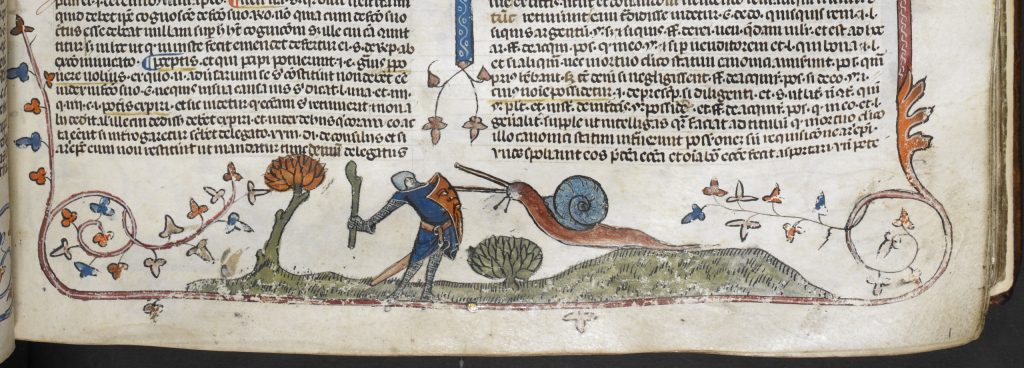
Figure 1. London, British Library, Royal Ms. 10 E IV, folio 107 recto. Detail of lower margin. (Image courtesy of the British Library).
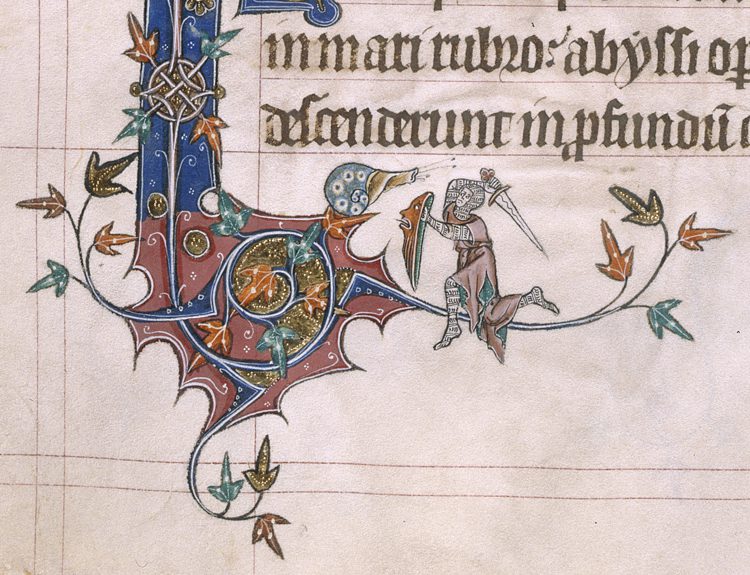
Figure 2. London, British Library, Additional Ms. 49622, folio 193 verso. Detail of lower margin. (Image courtesy of the British Library).
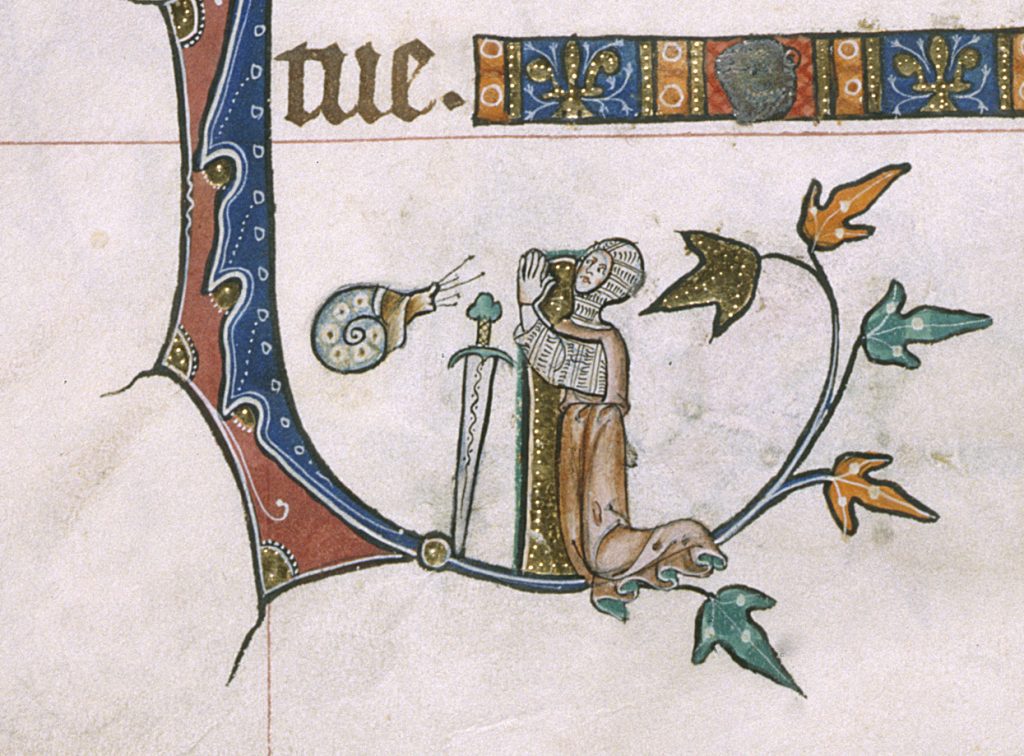
Figure 3. London, British Library, Additional Ms. 49622, folio 162 verso. Detail of lower margin. (Image courtesy of the British Library).
Herein lies the trouble with applying a single meaning to a marginal motif. While a set meaning may be convincing for one scholar’s limited data set, it does not hold the same weight for another’s. Of the two snail and knight battles that Pyrdum selects for his blog post, only one depicts the snail’s shell in the same gold-leaf material as the knight’s shield. Neither depict the snail on a raised or earthen ground-line, whereas one of Bleeke’s snails is depicted on a raised, grassy hill, the second is perched on a border tendril that elevates it above the knight, and the third seems to be floating in mid-air around the level of the knight’s head, giving each of them the high ground. For Bleeke, the comic vulnerability of the knights in these marginal examples serves her argument against the contemporary alt-right’s co-optation of medieval knights as the paradigms of ideal masculinity. She argues that, “twenty-first-century appropriations of the Middle Ages frequently feature a construction of masculinity that is premised on an ideal of knighthood and so grounded in violence.”[16] Bleeke goes on to state of the snail and knight motif;
The knight as an ideal male is supposed to be brave rather than cowardly, as well as powerful and strong. However, those purported virtues are largely a product of his equipment: the horse that elevates him, the shield and armor that allow him to block blows from others, and the sword that allows him to counterattack. In these images, the knight’s dependency on equipment is turned against him. Instead of being raised up by horses, these warriors are minimized through juxtaposition with the normally diminutive snail.[17]
This minimization of knights engaged in snail combat is only heightened when one considers examples where the snail is elevated on some form of ground.
As stated previously, it is unwise to make any all-encompassing statements about the meaning of a marginal motif regardless of its context. Lucy Freeman Sandler specifically warns against applying any single meaning and function of marginalia generally in “The Study of Marginal Imagery: Past, Present, and Future.” In her conclusion she questions;
Is a single interpretation of marginal imagery possible? As my review demonstrates, the answer is manifestly not, much as partisans of one or another view have insisted. Most investigations of marginal imagery have been limited in scope to one or another aspect – generic, parodic, scatological, monstrous – and conclusions about meaning have often been excessively categorical as a result. It should be stressed in conclusion that any one book containing marginalia is likely to include images of more than one type. Rather than looking at one kind of image in all books, therefore, it would be better to look at all kinds of images in any one book – or more ambitiously, all books with marginalia – and to consider every aspect of their meaning, including contradictory and overlapping meanings.[18]
I have quoted Sandler’s advice here in full as I do not wish what I have stated before, or what follows, to be considered a definitive conclusion about the function or significance of all iterations of the snail and knight motif as they appear in any manuscript. Instead, through an investigation of ground and ground-line in relation to the snail and knight, I intend to illuminate an additional layer of complexity that I believe is present in this already nuanced motif. The same is true for my discussion of the accompanying hare motif. It is my hope that going forward the function of ground, and the presence of related monde renversé motifs such as the hare, can be referenced by future scholars when the context is appropriate within the manuscripts they have chosen to study.
Borders, Margins, and Ground
When considering images in the margins of manuscripts, it is crucial to understand how they function in relation to the page as a whole. This includes not only their visual connection with text and illustrative image cycles, but also the borders. The word border often suggests the idea of a barrier between two separate entities. It can also imply an entrance, or locus where it is possible to cross over from one space and into another.[19] Furthermore, sometimes the borders operate not only as edges that divide the reader/viewer from the text of the manuscript page, but also as ground-lines that marginal figures rest upon. In her “Study of Marginal Imagery,” Sandler states, “It is worth looking more closely at the physical relation between marginal figural material and the marginal framework or border.”[20] She notes that sometimes marginalia can compose the borders of a manuscript itself, or that they can exist within a gap between parts of a border, but, “More often than not, however, the marginal extension creates a frame, ground, or background for the figural imagery.”[21] There are certainly examples of the snail and knight motif where the figures float in the space of the margin and the border creates no discernable grounding, or gravity, but combatants are more likely to rest upon or erupt out from the border decoration.
Carl Pyrdum, in his 2010 blog post titled “Gravity in the Margins,” argues that edges of deluxe Gothic manuscripts follow similar gravitational rules as the world of early 1990s Super Mario side-scrolling 8-bit.[22] Setting aside the somewhat rarer cases where marginalia float without gravity, Pyrdum identifies three types of ground in the margins that exert gravity on figures. The first and most obvious is the border in the bottom margin where figures can move left or right along this line. The second type of gravity occurs on borders that act as extensions emanating from decorated initials, or the space around in-line image cycles where marginal figures are able to move up and down the spaces to the left, right, and in-between columns of text. The final locus of gravitational pull is within the lower marginal space, bounded on top and bottom by text field and border. Here, small earthen mounds or tufts of grass provide ledges for the figures to rest, just as Mario can only leave the bottom edge of his background scroll if there is a platform for him to jump up to.[23] The presence of actual, earthen ground is less common than the border itself exerting gravitational pull. In general, it seems that either a manuscript uses an earthen ground-line frequently throughout the margins, or it does not do so at all.
Consequently, examples where actual earthen ground-lines appear in manuscripts, especially when those grounds are only employed as part of particular motifs and not ubiquitously throughout the margins, implies a level of significance beyond that of simple set dressing. The elevating of earthen ground-lines to create hills or other raised spaces in motifs where a battle is taking place is clearly meant to give strategic advantage to the combatant who holds the higher ground. Those wishing to study military training and battle tactics in the Middle Ages turned to the Epitoma rei militaris of Publius Flavius Vegetius Renatus, a widely popular late-Roman technical work.[24] In the section on fortifying one’s army for siege warfare Vegetius states, “Cities and forts are either fortified by nature or by human hand, or by both which is considered stronger. By “nature” is meant places which are elevated, precipitous, surrounded by sea, morasses, or rivers.”[25] In the construction of city walls that are meant to withstand attempts to knock them down, Vegetius advises that they should be bolstered with terreplein. The terreplein are mounds of earth dug up from the creation of fosses, or trenches, that Vegetius says should be placed in between the internal walls, “For no rams can breach a wall that is strengthened by earth, and if for some reason the masonry should be demolished the mass that has been compacted between the internal walls resists intruders in the wall’s stead.”[26] Finally, Vegetius recognizes that should a tower be built of sufficient height to breach a wall, it might become necessary to raise the level of the walls mid battle. For this he advises to build up the wall with cement, stones, mud, bricks, or hoarding (wooden boards), stating, “Naturally the machine is rendered ineffective if it is found to be lower.”[27] Vegetius even warns that attacking armies might trick you into thinking their towers are too low, and then secretly add another turret at the last minute. He asserts, “From it emerge soldiers who, because it is found to be higher, at once capture the city.”[28]
It is clear from Vegetius’s writings that finding a naturally elevated position and further fortifying that position with earthen-works was of strategic importance. Why then, are snails so often depicted in possession of the high ground in marginal warfare? Arguably, it is meant to imply that such a clear advantage is needed in order for them to defeat or sustain battle against their knightly adversaries, or that snails are cunning military strategists. This is both conflicting and comical, like most monde renversé images are.
Manifestations of High Ground
From the twenty-one examples I found in which the snail is raised up on some form of ground-line, there are three that capture the general range within this variation of the motif. Each example is drawn from a manuscript with vastly different contents than the others. In fact, the only real commonality between the three seems to be an interest in extensive marginalia. The first, already briefly discussed, can be found in the Smithfield Decretals; the second is an example from the second volume of an Arthurian romance manuscript (Beinecke Ms. 229), ca. 1290-1300; and the final is a Book of Hours (Walters, W. 90), early fourteenth century. All three of these manuscripts contain a version of the snail and knight motif where the human figure’s status as a knight is clearly articulated through the presence of arms and armor. Two are of the variant where the snail is raised on an earthen ground and the third shows the snail elevated by a border tendril.
The lower margin of folio 107 recto of the Smithfield Decretals is taken up entirely by a battle between a snail and knight (Fig. 1). The knight, on the left, is armed with a sword and shield, but the sword is in its sheath and he defends himself instead with a club. As Bleeke notes, the knight’s tunic is the same color blue as the snail’s shell and his shield is the same red as the snail’s body.[29] This folio, like many in the Smithfield Decretals, contains a fully articulated earthen ground-line that rests on top of the foliate border. The ground is grassy with a tree to the left of the knight and a small bush in between the knight and the snail. The snail does not simply sit on the hill on the right side of the ground, but instead uses this height advantage in the battle against the knight. The snail launches himself off the top of the hill, over the bush, and uses one of his four tentacles, or eye stalks, as a lance to penetrate the knight’s shield.[30] In this example, the snail is tactically making use of the high ground in order to defeat his opponent. There is another example of a snail battling a young man on folio 45 recto of the same manuscript. In this instance the man sling-shots rocks up at a large snail perched on a grassy hill. These two motifs suggest that even though earthen ground-lines were standard in the lower margins of the Smithfield Decretals, the snails are using their particular ground in a unique way.

Figure 4. New Haven, Beinecke Rare Books & Manuscripts Library, Ms. 229, folio 169 recto. Detail of upper margin. (Image courtesy of the Beinecke Library at Yale).
The version found in the upper margin of folio 169 recto of Beinecke Ms. 229 is another interesting variant of the snail and knight battle (Fig. 4). In this case the knight is mounted and charges towards the snail from the left. He is dressed in a chainmail hauberk with a blue tunic lined with gold over top. He holds a spear in his right hand, lifted up away from the snail, and a red shield in his left, placed defensively before him. The horse that carries the knight is rearing up as if in fear of the snail. The snail itself is perched on top of a brown rock that places him at eye level with the horse. What makes this example of the snail and knight motif especially fascinating is that it is the only use of earthen ground in the margin of either this manuscript or its companion manuscript comprising the first section of the Arthurian romance (BnF fr. 95). These volumes were illuminated by an artist pair that were responsible for the illustrative image cycle, the marginalia, and likely the decoration of the borders.[31] The entire program of illumination was well organized and intentional in execution. By choosing to include an earthen ground-line as part of this and only this motif, the artists are making a statement about the importance of a raised position of attack for the snail.
Both of these Arthurian romance volumes are scrupulous about their adherence to the laws of gravity. Every marginal figure is either attached to the borders, erupting out from them as hybrids, or resting upon them as if gravity were pulling them down. The presence of the rocky hill on which the snail sits in this instance must have felt so crucial to the successful construction of the motif that the artists chose to deviate from their clear standard in the margins. This implies that the hill was a necessary component, a weapon in the snail’s arsenal, that allows him to mount an offense against a knight on horseback.
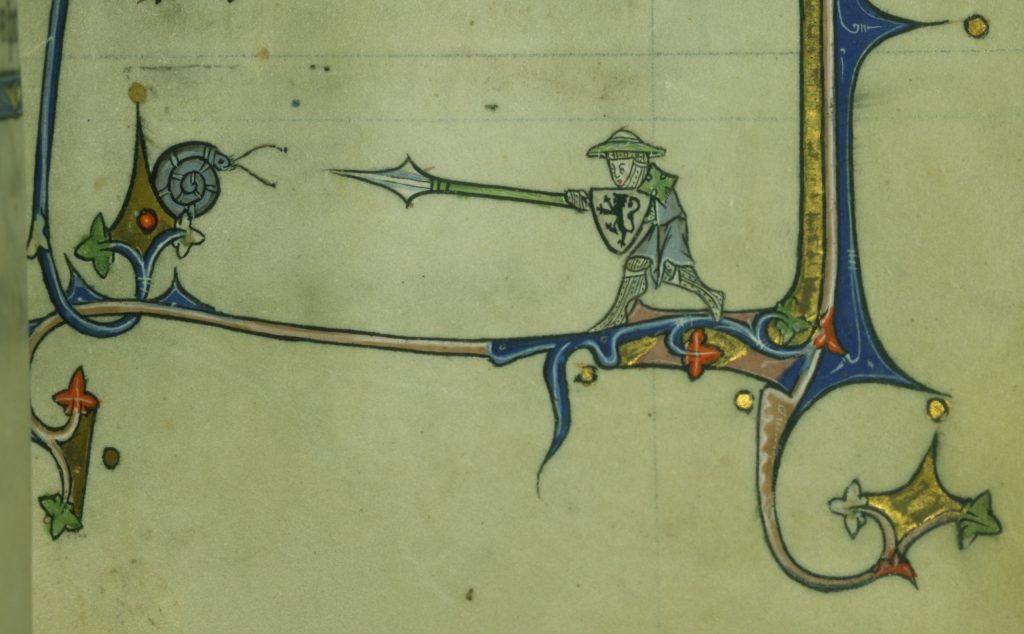
Figure 5. Baltimore, The Walters Art Museum, W. 90, folio 134 recto. Detail of lower margin. (Image courtesy of the Walters Museum of Art).
The final example can be found in the lower margin of a Book of Hours, folio 134 recto (Fig. 5). Here, there is no earthen ground. Instead, there is a border made of blue, rose, and gold lines that occasionally intersect and spiral into tendrils topped by leaves. The knight stands to the right on a blue portion of the border. He holds a lance out towards the snail and raises a lion rampant sable shield as he backs away. The snail is raised up level to the lance on a border tendril that splits in two with a leaf at either end and a gold gilded spike in the middle. The snails’ tentacles reach out to challenge the lance. Despite this marginal battle not taking place on an earthen ground, there is one key commonality between all three of these examples. In each one, the elevation of the snail onto the high ground is an important indicator of its eventual victory over the knight. It is clear that in each case it was essential for the artists to demonstrate both that the snail has all the necessary tools to win, and that the knight lacks what is essential to fend off defeat. Much of the scholarship has focused on the cowardice of the knights, be they dropping their weapons, fleeing the battle, or on their knees begging for mercy. But almost as important to the success of the motif is the prowess of the snails. They are exceptionally giant in relation to the knights, they often have more tentacles than are anatomically correct, and they use that anatomy as weapons. Finally, in at least twenty-one instances they take advantage of the high ground in order to aid their victory.
Snails, Hares, and the Monde Renversé
I would like to now return to the association between the snail and knight motif and hares, which was first noted by Randall but has not been subsequently investigated. A compelling example of this visual association occurs in a psalter-hours (Morgan Library, Ms. M.88) produced in France in ca. 1370-1380. In this instance, not only does the snail make use of an earthen hill to achieve tactical high ground over his opponent, a hare also appears as part of the image. Within the lower margin of folio 60 verso, a snail rests on a rather large earthen hill (Fig. 6). The hill is grassy near the base and rocky near the top where the snail sits. The entire earthen work raises the snail so high within the space of the lower margin that his tentacles nearly brush the bottom line of the text (Fig. 7). Facing off against the snail is a man wearing a fool’s cap. He holds up a sword and shield towards the snail as he slowly backs away. The presence of the hill and the fact that the man is slightly crouched allows the snail to stand above the man’s eye level. The coloring of the snails’ shell, a brown-gray wash, is similar to that of the man’s shield, and the swirl pattern of the shell seems to mimic the two concentric circles that make up the shield’s shape. Below, in the bottom-left corner of the hill is a large hole that a hare peeks out from. He is looking back over his shoulder at the snail on the hill above. There are other examples of snails, men, and hares appearing in this same manuscript, and even on the same folio or in the same margin, but M.88, folio 60 verso is the only one where all three are present in the same motif.
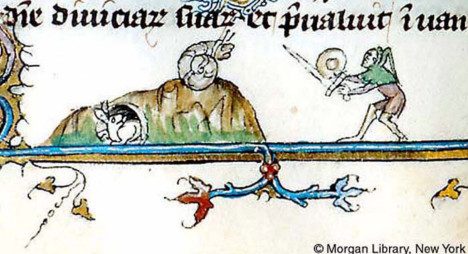
Figure 6. New York, Morgan Library, M. 88, folio 60 verso. Detail of lower margin (Image courtesy of the Morgan Library).
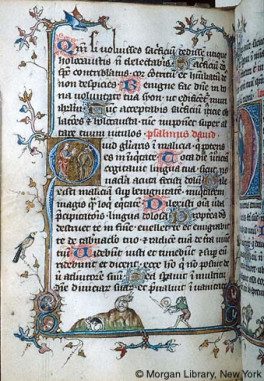
Figure 7. New York, Morgan Library, M. 88, folio 60 verso (Image courtesy of the Morgan Library).
There are several compelling reasons why snails and hares may have an association with one another in manuscript marginalia. The first, as Randall also notes, is that they both operate as part of the monde renversé genre.[32] Just as snails battle and defeat knights, hares are sometimes seen hunting humans and dogs, a direct reversal of their role as prey animals in the real world. In the Morgan Library, Ms. M.88 example, the hare might find it safe to come out of his hole because the snail is there, protecting them both from the armed man. Another association I would like to suggest, and one that is particularly compelling in the marginal images from M.88, is that the hills and warrens that the hares hide inside are similar to the shells that the snails carry on their backs. In the same way that the shells are like the knights’ armor, protecting them from harm, the hills can be used by the hares as defensive positions. There are several other folios of M.88 where hares are found in the margins. Specifically, on folios 168 verso and 170 recto hares are, in the second case, fleeing into a warren in the ground on the far left, and in the first case, peeking out from a similar hole in the ground (Fig. 8 and Fig. 9). In the example on 168 verso the blades of grass that form the hill almost curl around the edge of the hole like the swirl of a snail’s shell.
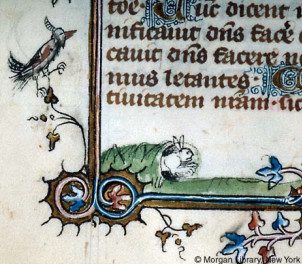
Figure 8. New York, Morgan Library, M. 88, folio 168 verso. Detail of lower margin. (Image courtesy of the Morgan Library).

Figure 9. New York, Morgan Library, M. 88, folio 170 recto. Detail of lower margin. (Image courtesy of the Morgan Library).
What makes the world turned upside-down style so funny is the ability to convince its viewer that despite the absurdity of the situation, the “lesser” being is going to end up on top. Part of how it does this is to give those creatures who are disadvantaged in the real world some clear advantage in the upside-down one. On folio 57 verso of the Smithfield Decretals a hare points an arrow at an approaching dog, who looks entirely defenseless as he leans tiredly against a walking stick. In the Gorleston Psalter, in addition to examples of hares that frolic in and out of their warrens in a number of the margins, there is one on folio 149 verso that rears up in a rampant pose against a knight with a shield who swings his sword back behind his head (Fig. 10). Sarah J Biggs suggests that the frequent occurrences of hares poking their heads out of their warrens in the margins of the Gorleston Psalter might indicate that the original owner was indeed John de Warenne, 7th Earl of Surrey (ca. 1286-1347), creating a pun on his last name.[33] Perhaps this is true, or possibly the patron wished for a popular program of monde renversé marginalia, accounting for the profusion of both snail combats and hare antics.
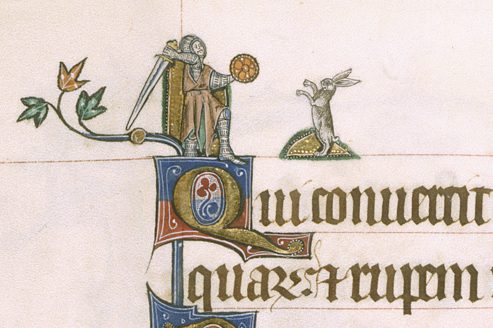
Figure 10. London, British Library, Additional Ms. 49622, folio 149 verso. Detail of upper margin. (Image courtesy of the British Library).
Sexual Interpretation of Snail Combat
Images of hares protruding from warrens, or turning around to chase dogs, can also be seen as an allusion to sexual acts. This would give a sexual connotation to the snail and hare of Morgan Library’s M.88. In his article on the illustration of Aristotle’s De animalibus, Michael Camille notes the presence of dogs chasing hares and hares chasing each other in the marginal art of a section of Book V devoted to modes of propagation, or copulation.[34] Camille argues both that, “The dog and rabbit were conventional moralizing symbols at this time, not from the Bestiary but from vernacular love-poetry, where they often refer to the male and female sexual organs,” and that, “The bulk of illuminated copies of Aristotle’s Latin works were produced in Paris at the very period when marginal art flourished, from c. 1250 to 1320. In this particular case there is no perceptible difference between the animals that are painted inside the initials and those that prance in the lower and upper margins.”[35]
While clearly the hare is meant to represent female genitalia in the copulation process, it is intriguing that Aristotle mentions in the section of De animalibus on the “rearward presentment” of dog copulation that “in the case of the hare the female often first mounts the male.”[36] In the medieval period sex was seen not as a mutual act, but instead as one person, the man, doing something to the other person, the woman. For example, the French verb foutre had an older meaning, “to penetrate,” and it took the male subject.[37] For the medieval reader, the description of a female hare mounting the male at the onset of copulation would have reflected a gendered role reversal.
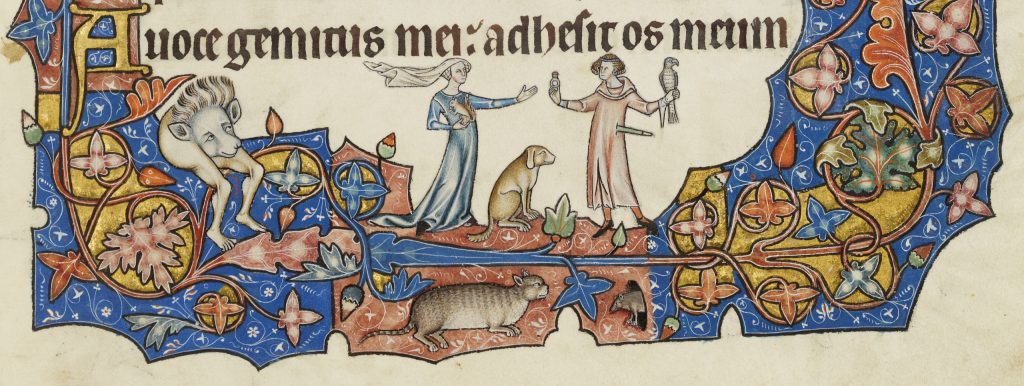
Figure 11. Oxford, Bodleian Library, Ms. Douce 366, folio 131 recto. Detail of lower margin. (Image courtesy of the Bodleian Library at Oxford).
What then, does this mean for examples of hares in monde renversé marginal motifs? In the example from M.88, folio 60 verso, the hare may not seem particularly combative, but he is emerging from his hole, and the snail above from his shell, in a manner that might mirror the growth of a penis during erection. In “A Bawdy Betrothal in the Ormesby Psalter” Sandler describes a marginal courtship scene between a “young knight” and “a young lady of high rank” in which the knight is gifting the lady a ring (Fig. 11).[38] Below the two lovers, within the bottom border decoration, is the image of a cat chasing a mouse. The cat is directly below the woman and the mouse, peeking out of its hole in a similar manner to the hare in M.88, is below the man. According to Sandler, “cat faces mouse as girl faces boy; from this confrontation it is visually evident that the cat is to be understood in relation to the female and the mouse to the male.”[39] If there were any confusion that the peeking mouse was meant as an allusion to the penis, above the knight sports a dagger that protrudes out of the clothing around his midsection. Sandler describes the knight’s dagger as “shockingly like a part of his anatomy uncovered and revealed,” and goes on to draw parallels between this image and fabliaux descriptions of la point or “the prick,” a term that was used interchangeably as a noun and a verb.[40]
In the lower margin of M.88, folio 60 verso it is arguable that the hare poking out from his burrow, and the snail emerging from his shell with his long tentacles erect, are meant to allude to male anatomy. This confrontation would have been disquieting for the male in the fool’s cap, and it is therefore not surprising that he has chosen to back away from the snail. The fear of defeat, and imminent penetration, from the better armored and strategically elevated opponent must have been great. Yet, there is a history of scholarship on medieval marginalia that suggests images of a snail be viewed as an allusion to not the phallus, but instead the vagina. Roger Pinon argues that the shape of the snail’s shell associated it with female genitalia and hermaphrodites.[41] Camille picks up on this supposition in Image on the Edge where he compares the image of a snail perched on a raised border tendril from a Flemish Psalter (Copenhagen, Kongelige Bibliotek, Ms. 3384) to the “drooping drone of the testicular bagpipe above and a woman’s ‘basket’ being attacked by a ram on the right page.”[42]
According to Madeline Caviness, frolicking hares, armored snails, bagpipes, and baskets are all part of a body of images that are evidence of medieval gender construction by the thirteenth century.[43] In an effort to expand upon the work of her 1993 Speculum article on the Hours of Jeanne d’Evreux, Caviness conducted a survey of the marginalia in six books made for men and nine books made for women in the French and Flemish courts across the fourteenth century. The resulting data demonstrates that there are certain motifs that, while multivalent on their own, can be grouped together with other motifs under common categories of valence.[44] Caviness proposes that hares (often pursued by hounds), containers that allude to wombs such as barrels, baskets, vases, and jugs, or the womb-like shape of the spindle all can be, according to Caviness, categorized as examples of fecundity. This category does not simply occur in books made for women, as one might expect, but instead books made for married people, both male and female. These same motifs are often absent or much rarer in books made for nuns.[45]
Hybrid grotesques, or freaks as Caviness calls them, with female attributes such as mermaids, sirens, or harpies, are more common in books for men. So too are motifs under the categorical valence of sexuality, which includes weapons, battles, and musical instruments. These objects either invoke male genitalia or they are, “charged with sexuality as well as phallic power.”[46] There are some notable exceptions to the trend of sexual marginalia being a primary indicator of male gender construction. For example, a significant number of sexual marginal motifs are found in the Hours of Jeanne d’Evreux, the Hours of Jeanne de Savoie, and the Hours of Yolande of Flanders, all books made for unmarried or recently married lay women. Given that the snail and knight motif features weapons and battle, it would fall easily under the sexuality category as Caviness defines it. Yet, due to the frequent proximity of hares to the snail and the knight, the two are often linked in an intriguing way. Does this suggest that the snail provides a bridge between the often-male gendered grouping of sexuality marginalia and the female gendered ones of fecundity? Or perhaps, does the presence of the snail and knight motif heighten the likelihood that the corresponding manuscript was made for a recently married individual, almost always hoping to come together in a romantic joust to produce offspring, regardless of their gender? Caviness’s study allows for such variations in meaning, acknowledging the presence of diverse viewing communities even within a specific gender.[47]
The Biology of Snail Copulation
Isidore of Seville stated in his seventh century Etymologies that worms of the earth, including snails, were born without the presence of intercourse.[48] He was not entirely wrong as the species of snail common to European gardens are in fact hermaphroditic.[49] What is unclear is to what extent medieval thinkers understood just how much of a violent battle occurred during the copulation of hermaphroditic garden snails. These animals are in possession of “love darts” or calcareous barbs that can be shot from one snail into the flesh of another during the sexual act. Koene and Schulenburg argue that sexual conflicts can in fact further the “arms race” of natural selection in hermaphroditic species. They hypothesize that the dart, which can be shot out by either partner during copulation, “serves to introduce an allohormone produced by the associated glands, into the blood of the partner. This allohormone inhibits digestion of sperm, which results in more of the donated sperm reaching the spermathecae and fertilizing eggs.”[50] Another study suggests that a successful strike with a “love dart” is not a necessary process of copulation, and in fact one-half of all shootings miss or glance off their intended target.[51] But, when the dart does hit its target, it is more likely to assure paternity for the striking snail, even if its partner goes on to copulate with others.[52]
Medieval thinkers and artists may not have known the intricate process within which the “love darts” were employed, but did they ever witness the results? Could they have seen a snail sliding through the garden with a large, milky white barb protruding from its side? Did they even witness the epic joust that occurred when two snails copulated? The reintroduction of Aristotle’s De animalibus after 1220 CE did spark an interest in the merits of observing animals independent of any moral or Christological significance they may have had, and by 1255 CE the work had been added to the list of required texts taught at the Faculty of Arts at the University of Paris.[53] Moreover, there are several depictions of snails in manuscript marginalia that use their tentacles as weapons. For example, the snail from the Smithfield Decretals, folio 107 recto has two small tentacles that are pointed downward, and two much larger and longer ones that thrust forward into the knight’s shield (Fig. 1). The snail from folio 149 verso of the Gorleston Psalter (Fig. 3) also has four tentacles, and they are thrust forward towards the pleading knight.
In these and many other examples of the snail and knight motif, where the snails’ tentacles are aggressively pointed in the direction of the oncoming knight, sometimes appearing larger, pointed, and otherwise more like a weapon, prompted scholars such as Randall and Pinon to refer to them as “horns” in much of their scholarship.[54] This might not be definitive proof that the medieval mind was aware of the “love dart” phenomenon, but, if it did know it could help to answer the long-asked question of why snails are so combative in the margins of manuscripts. These snails, with their lance-like tentacles and their ability to capture the strategic high ground are the apex predators, and sexual aggressors, of the monde renversé style motif.
Conclusion
What monde renversé creatures such as the snail and the hare have in common is their multivalent meanings and ability to be deployed in a number of diverse, sometimes incongruous contexts. Did medieval artists mean the snails to be symbolic of female genitalia, or male? Do these snails have the ability to suddenly transition from a soft, weak, feminine symbol to a powerful, male, phallic one when threatened, in the same way that hares can poke their heads outside of their burrows and turn from prey to predator? Or, should the snail and knight motif be interpreted firmly within Caviness’s category of sexuality and masculine gender construction? This article has investigated several meanings typically assigned to the snail and knight motif, in some cases expanding upon them. These include the motif as a representation of knightly cowardice and the corresponding connection between the shell of the snails and the armor of the knights. This connection, suggested by Marian Bleeke, implies that the knights are not cowards, but instead that they possess the same vulnerabilities as the snail; soft interiors encased by armored exteriors. Another explanation investigated is that of the motif’s connection to the comic tradition of monde renversé marginalia, and the idea that it, like other monde renversé motifs, sometimes contains a sexual significance. Finally, this article has introduced a new layer of interpretation with an analysis on how high ground is frequently employed as a crucial element of the marginal scene. The snails use of high ground makes them sound military strategists and implies that the knights are not so much cowardly as they are incompetent.
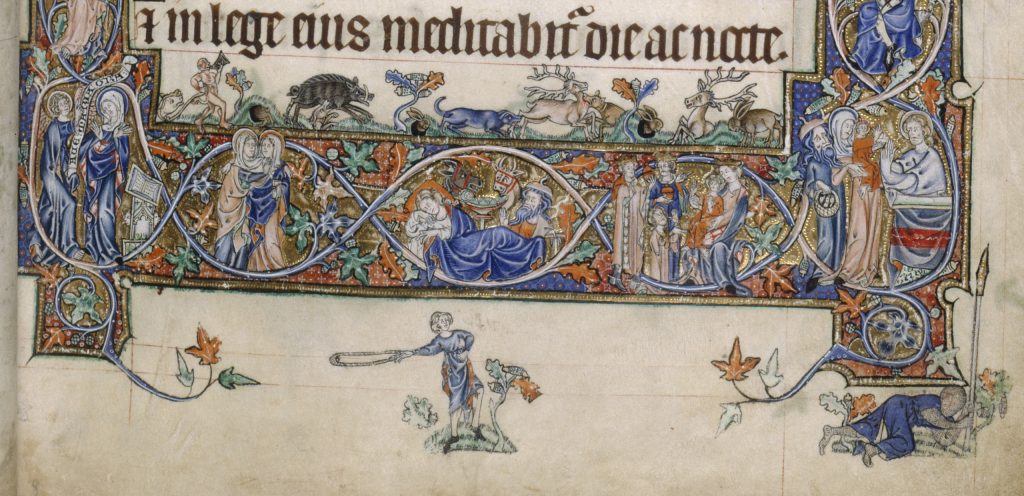
Figure 12. London, British Library, Additional Ms. 49622, folio 8 recto. Detail of lower margin. (Image courtesy of the British Library).
To conclude, I would like to return to two examples of snail combat. I do this to demonstrate how the presence of high ground and nearby hares can help to inform which interpretations of the motif are most useful in any given context. The first example is that of the Gorleston Psalter’s folio 193 verso (Fig. 2) and the second is M. 88’s folio 60 verso (Fig. 6). As stated previously, the Gorleston Psalter was produced in ca. 1310, possibly for John de Warenne. On folio 193 verso there is a snail and knight battle in the lower margin in which the snail is raised up on a foliate border. This is one of the examples that Bleeke uses to suggest the motif has the significance of knightly cowardice, in part because the color of the snail’s shell corresponds to the inside of the knight’s shield as well as the inner layer of his tunic.[55] There is another battle found in the lower margin of folio 8 recto of this manuscript in which high ground is also employed that is notable (Fig. 12). Here David stands on a small grassy hill and swings a sling. Opposite him, Goliath has already fallen to the ground, his backside facing David and his spear ineffectually pointed up the right margin. Like the snail, David has the high ground, and this scene is a fitting accompaniment to the start of a Psalter.
At first glance, the parallels between these two images suggest that it is not cowardice on the part of the larger opponent, but instead military intelligence, bravery, and perhaps even moral rectitude in that of the weaker opponent that wins the day. John de Warenne was a knight himself, and fought for King Edward I in his battles against Scotland.[56] Therefore, it would make sense that a psalter made for him would possess images of military prowess and the triumph of good against evil. Yet, the position of Goliath with his backside so vulnerably presented to David allows for a sexual reading as well. Perhaps the profusion of hare images in this manuscript are not simply puns on John de Warenne’s name. When combined with motifs such as the David and Goliath or the several snail battles that have a possible sexual interpretation, the hares could instead be interpreted as the fecundity that should be desired by a man for his marriage. In fact, Warenne tried repeatedly to divorce his wife, with whom he had no offspring, and ultimately had several children with his mistress.[57]
In the case of M.88, we have discussed in detail the lower margin of folio 60 verso. A snail sits atop a large hill that contains a hare peeking out of a warren, and faces off against a man in a fool’s cap. This manuscript was produced ca. 1370-1380 for a female member of the Guyard family in Lorraine. The woman in question is pictured praying in the miniature on folio 151 recto, and a heraldic shield of the Guyard family, azure a bend dexter or between two rosettes of the second, appears on folio 176 recto.[58] The lower margin of this manuscript contains many motifs that fall within Caviness’s category of fecundity. These include at least eight margins with images of dogs hunting hares or hares entering warrens. There is also a snail pulling a cart with a barrel, and a dog and a boar holding spindles and other spinning implements, both of which could be interpreted as allusions to the womb. There are significantly less motifs connected with sexuality, although a few are present. A man fires an arrow into the exposed backside of his companion, three men contort their bodies to create a quintain, used for jousting practice, and a woman plays a positive organ while a man pumps the bellows. There are also three examples of lions including one that roars and scares two hares. Caviness cites De secretis mulierum and Albericus of London’s assertions that lions were symbolic of the carnal love of youth or adolescence that should be avoided.[59]
While the snail battles in M.88 and the Gorleston Psalter have possible sexual interpretation, they each operate differently in the given contexts. In the Gorleston Psalter, the height advantage of the snail due to the raised foliate border, the visual connection between the snail’s shell to the arms and armor of the knight, and the presence of other chivalric battles such as David and Goliath, are all suggestive of masculine gender construction. In this case, the snail may be interpreted as a weaponlike phallus, the battle prowess of which would hopefully result in many offspring for Warenne, represented by the hares. The use of high ground further strengthens this argument as it is a clear indicator of military strategy. Here, the marginalia are appropriate for their male warrior owner. In contrast, the snail/fool battle in M.88 can be interpreted differently. Sexually themed marginalia could function as warnings for the female owner, representative of carnal lovemaking that she should avoid. The snail may be an example of female genitalia taking on subversive masculine attributes of aggression. The fact that here the snail battles a fool instead of a knight indicates that this would be an inappropriate and unadvisable sexual interaction to enter into. In this example the high ground is articulated as an earthen hill a hare can also burrow inside. This would show the female owner a side-by-side comparison of the inappropriate and approved functions of her sexuality. The hill transforms from a strategic military position into a womb that can be penetrated and produce offspring, like the hares that poke in and scurry out. In both of these examples of the snail and the knight motif the ground-line, or border as ground, plays a crucial third character in the scene. It does not force a single interpretation of the motif, but instead adds to its multivalence by illuminating an additional layer of complexity.
References
| ↑1 | This list includes individuals such as Kathryn A. Smith, Dominic Leo, Jonathan Morton, and Elizabeth Moore Hunt, among others. |
|---|---|
| ↑2 | Lilian Randall, “The Snail in Gothic Marginal Warfare,” Speculum 37, no. 6 (June 1962), pp. 358-367. https://doi.org/10.2307/2852357 |
| ↑3 | Ayun Halliday, “Why Knights Fought Snails in Illuminated Manuscripts,” Open Culture, May 10, 2019, https://www.openculture.com/2019/05/why-knights-fought-snails-in-illuminated-medieval-manuscripts.html. Sarah J. Biggs, “Knight v Snail,” British Library Medieval Manuscripts Blog, September 26, 2013, https://blogs.bl.uk/digitisedmanuscripts/2013/09/knight-v-snail.html. Colin Schultz, “Why Were Medieval Knights Always Fighting Snails,” Smithsonian Magazine, October 14, 2013, https://www.smithsonianmag.com/smart-news/why-were-medieval-knights-always-fighting-snails-1728888/. Carl Pyrdum, “What’s So Funny About Knights and Snails,” Got Medieval, July 7, 2009, http://www.gotmedieval.com/2009/07/whats-so-funny-about-knights-and-snails.html. |
| ↑4 | This idea was first proposed by Lucy Freeman Sandler in 1997, and a further discussion of its importance to this essay will be elaborated on presently. Lucy Freeman Sandler, “The Study of Marginal Imagery: Past, Present, and Future,” in Studies in Manuscript Illumination (London: The Pindar Press, 2008), 125-126. Originally published as Lucy Freeman Sandler, “The Study of Marginal Imagery: Past, Present, Future,” Studies in Iconography 18 (1997): 1-49, https://www-jstor-org/ stable/23924068. |
| ↑5 | Randall, 358. |
| ↑6 | Randall, 358. |
| ↑7 | Lilian M. C. Randall, Images in the Margins of Gothic Manuscripts, Berkeley: University of California Press, 1966. Data provided to the author as an Excel spreadsheet list by Maeve K. Doyle and Alex Brey, as part of the ongoing and forthcoming project with the Getty Advanced Workshop on Network Analysis and Digital Art History, “Modeling Networks of Artistic Contact in French Gothic Manuscripts, 1260-1320.” Information further discussed by Doyle and Brey in, “Networked Borders: A Computational Analysis of Images in the Margins of Gothic Manuscripts,” in Coloring Outside the Lines: New Perspectives on the Borders of Manuscripts, International Medieval Congress at Leeds, 2021. https://doi.org/10.1525/9780520376045 |
| ↑8 | I have decided to remove from this data analysis all examples of snail combat found within the line endings of the Psalter-Hours of Guiluys de Boisleux (Morgan Library, Ms. 730). They are similarly not present in Randall’s or Doyle and Brey’s data. I removed these examples because the Psalter-Hours contains 92 separate images of snail and knight or snail and human battles in its line endings. Due to the ridged borders of line endings both combatant figures are shown stretched out on a straight line and neither is raised above or below the other. Including the Psalter-Hours line endings in the data on snail combat in the borders would have doubled the sample set with an articulation of the motif that is specific to this single manuscript. The choice not to include these examples should not be taken as commentary on the relationship between motifs in the margins of manuscripts as compared to those found in line endings. |
| ↑9 | Randall, 365-366. |
| ↑10 | Randall, 364. |
| ↑11 | Randall, 361. |
| ↑12 | Pyrdum, “What’s So Funny about Knights and Snails?,” Got Medieval, http://www.gotmedieval.com/2009/07/whats-so-funny-about-knights-and-snails.html. |
| ↑13 | Marian Bleeke, “Modern Knights, Medieval Snails, and Naughty Nuns,” from Whose Middle Ages? Teachable Moments for an Ill-used Past, edited by Andrew Albin, Mary C. Erler, Thomas O’Donnell, Nicholas L. Paul, and Nina Rowe (Fordham University Press, New York, 2019). https://doi.org/10.2307/j.ctvnwbxk3.22 |
| ↑14 | Bleeke, “Modern Knights, Medieval Snails, and Naughty Nuns,” 204. |
| ↑15 | Bleeke, “Modern Knights, Medieval Snails, and Naughty Nuns,” 204. |
| ↑16 | Bleeke, “Modern Knights, Medieval Snails, and Naughty Nuns,” 196. https://doi.org/10.1515/9780823285594-020 |
| ↑17 | Bleeke, “Modern Knights, Medieval Snails, and Naughty Nuns,” 203-204. |
| ↑18 | Lucy Freeman Sandler, “The Study of Marginal Imagery: Past, Present, and Future,” in Studies in Manuscript Illumination (London: The Pindar Press, 2008), 125-126. Originally published as Lucy Freeman Sandler, “The Study of Marginal Imagery: Past, Present, Future,” Studies in Iconography 18 (1997): 1-49, https://www-jstor-org/ stable/23924068. |
| ↑19 | Michael Camille argues that, “During the Middle Ages the edges of the known world were at the same time the limits of representation.” He goes on to describe a medieval population that was deeply aware of the boundary markers in their physical world which led to the, “betwixt and between” as “important zones of transformation.” Moreover, he states, “Openings, entrances, and doorways, both of buildings and the human body…, were especially important liminal zones that had to be protected.” Michael Camille, Image on the Edge: The Margins of Medieval Art (Cambridge, Massachusetts: Harvard University Press, 1992), 14-16. |
| ↑20 | Sandler, 82. |
| ↑21 | Sandler, 82. |
| ↑22 | Carl Pyrdum, “Gravity in the Margins,” Got Medieval, January 5, 2010, http://www.gotmedieval.com/2010/01/gravity-in-the-margins.html. |
| ↑23 | Please see Pyrdum’s blog post for an example taken from the Ormesby Psalter where Pyrdum has super-imposed Mario’s block platforms over the patches of grass where marginal figures are grounded. Pyrdum, “Gravity in the Margins,” Got Medieval, http://www.gotmedieval.com/2010/01/gravity-in-the-margins.html. |
| ↑24 | N.P. Milner, translator, Vegetius: Epitome of Military Science, 2nd ed. (Liverpool: Liverpool University Press, 2011), xiii. |
| ↑25 | Milner, trans., Vegetius, Book IV, Chapter 1, 121. |
| ↑26 | Milner, trans., Vegetius, Book IV, Chapter 3, 122. |
| ↑27 | Milner, trans., Vegetius, Book IV, Chapter 19, 131-132. https://doi.org/10.1007/s007260070041 |
| ↑28 | Milner, trans., Vegetius, Book IV, Chapter 19, 132. |
| ↑29 | Bleeke, “Modern Knights, Medieval Snails, and Naughty Nuns,” 204. |
| ↑30 | Land snails have four long stalk-like organs protruding from their heads, known as tentacles. Two of these have an eye at the end and are often colloquially called eye-stalks. The other two are used for smell. Given the number of manuscript examples in which the snails are depicted with eyes on their heads, it is unclear if medieval artists were aware of the sight and smell function of these tentacles. “Morphology of a Snail,” Merriam Webster: Visual Dictionary Online, http://www.visualdictionaryonline.com/animal-kingdom/mollusks/snail/morphology-snail.php. Accessed September 21, 2022. |
| ↑31 | Emily Shartrand, “Sexual Warfare in the Margins of Two Late-Thirteenth-Century Franco Flemish Arthurian Romance Manuscripts,” (PhD diss., University of Delaware, 2020), 8. https://doi.org/10.17077/1536-8742.2174 |
| ↑32 | Randall, 360-361. |
| ↑33 | Sarah J. Biggs, “ ‘Virile, if Somewhat Irresponsible’ Design: The Marginalia of the Gorleston Psalter,” British Library Medieval Manuscripts Blog, 11 October 2012, https://britishlibrary.typepad.co.uk/digitisedmanuscripts/2012/10/virile-if-somewhat-irresponsible-design-the-marginalia-of-the-gorleston-psalter.html. Accessed September 21, 2022. https://doi.org/10.32964/TJ11.10.21 |
| ↑34 | Michael Camille, “Bestiary or Biology? Aristotle’s Animals in Oxford, Merton College, MS 271,” in Aristotle’s Animals in the Middle Ages and Renaissance, edited by Carlos Steel, Guy Guldentops, and Pieter Beullens (Leuven, Belgium: Leuven University Press, 1999), 366. |
| ↑35 | Camille, “Bestiary or Biology?” 364-365; 363. |
| ↑36 | Camille, “Bestiary or Biology?” 366. Referencing Aristotle, De animalibus: Historia Animalium, Book V, 2, 539b22-24. |
| ↑37 | Ruth Mazo Karras, Sexuality in Medieval Europe. Doing Unto Others, 2nd Edition (New York: Routledge, 2012), 3. |
| ↑38 | Lucy Freeman Sandler, “A Bawdy Betrothal in the Ormesby Psalter,” in Studies in Manuscript Illumination (London: The Pindar Press, 2008), 33-44. Originally published as Lucy Freeman Sandler, “A Bawdy Betrothal in the Ormesby Psalter,” in Tribute to Lotte Brand Philip: Art Historian and Detective, edited by W.W. Clark, C. Eisler, W.S. Heckscher, and B.G. Lane, 154-159 (New York: Abaris Books, 1985), 35. |
| ↑39 | Sandler, “A Bawdy Betrothal in the Ormesby Psalter,” 36. |
| ↑40 | Sandler, “A Bawdy Betrothal in the Ormesby Psalter,” 37. |
| ↑41 | Pinon here also references the writing of Plautus the Latin who stated that limax could also mean “courtesan” or “whore.” Roger Pinon, “From Illumination to Folksong: The Armed Snail, a Motif of Topsy-Turvey Land,” in Folklore Studies on the Twentieth Century: Proceedings from the Centenary Conference of the Folklore Studies, edited by V. Newall, 76-113 (Woodbridge, Suffolk, 1980), 79. |
| ↑42 | Camille, Image on the Edge, 35. |
| ↑43 | Madeline H. Caviness, “Chapter 3: Hedging in Men and Women: The Margins as Agents of Gender Construction,” Reframing Medieval Art: Difference, Margins, Boundaries, https://dca.lib.tufts.edu/caviness/chapter3.html. Accessed September 21, 2022. |
| ↑44 | Caviness, “Chapter 3: Hedging in Men and Women,” https://dca.lib.tufts.edu/caviness/chapter3.html. Accessed September 21, 2022. |
| ↑45 | Caviness, “Chapter 3: Hedging in Men and Women,” https://dca.lib.tufts.edu/caviness/chapter3.html. Accessed September 21, 2022. |
| ↑46 | Caviness, “Chapter 3: Hedging in Men and Women,” https://dca.lib.tufts.edu/caviness/chapter3.html. Accessed September 21, 2022. |
| ↑47 | Caviness, “Chapter 3: Hedging in Men and Women,” https://dca.lib.tufts.edu/caviness/chapter3.html. Accessed September 21, 2022. |
| ↑48 | Isidore of Seville, and Stephen A Barney, The Etymologies of Isidore of Seville (Cambridge: Cambridge University Press, 2006), Book 12, 5:1-18. |
| ↑49 | Joris M. Koene and Hinrich Schulenburg, “Shooting darts: co-evolution and counter-adaptation in hermaphroditic snails,” BMC Evolutionary Biology 5, 25 (2005), https://doi.org/10.1186/1471-2148-5-25. |
| ↑50 | Koene and Schulenburg, “Shooting darts,” https://doi.org/10.1186/1471-2148-5-25. |
| ↑51 | Ronald Chase and Katrina C. Blanchard, “The Snail’s Love-Dart Delivers Mucus to Increase Paternity,” Proc Biol Sci, 273, 1593, (2006); 1471-1475. Published online March 14, 2006, https://www.ncbi.nlm.nih.gov/pmc/articles/PMC1560308/. https://doi.org/10.1098/rspb.2006.3474 |
| ↑52 | Chase and Blanchard, “The Snail’s Love-Dart Delivers Mucus to Increase Paternity,” https://www.ncbi.nlm.nih.gov/pmc/articles/PMC1560308/. |
| ↑53 | Camille, “Bestiary or Biology?” 355, 361. |
| ↑54 | Pinon references a French poem from 1493 CE titled Débat des gens d’armes et d’une femme contre un lymasson in which a woman called Femme à Hardy Courage leads a group of men to attack a snail wreaking havoc on her vines. She approaches first with her distaff and threatens the snail who is standing on top of a fortified castle with his “horns extended.” The men then join the woman and order the snail “to draw its horns in.” This poem originated from over a century later than most of the marginal examples of snail and knight battles in this essay, but its connections are significant. Pinon, “From Illumination to Folksong,” 81. |
| ↑55 | Bleeke, “Modern Knights, Medieval Snails, and Naughty Nuns,” 204. |
| ↑56 | F.R. Fairbank, “Last Earl of Warenne and Surry, And the Distribution of His Possessions” Yorkshire Archaeological Journal, Vol. 19, (1907), 194. |
| ↑57 | F.R. Fairbank, “Last Earl of Warenne and Surry, And the Distribution of His Possessions” Yorkshire Archaeological Journal, Vol. 19, (1907), 198-199. |
| ↑58 | “Psalter-Hours,” The Morgan Library & Museum Catalogue, https://www.themorgan.org/manuscript/77020, Accessed September 26, 2022. |
| ↑59 | Madeline Caviness, “Patron or Matron? A Capetian Bride and a Vade Mecum for her Marriage Bed,” Speculum, Vol. 68, No. 2 (April 1993), 345. https://doi.org/10.2307/2864556 |
